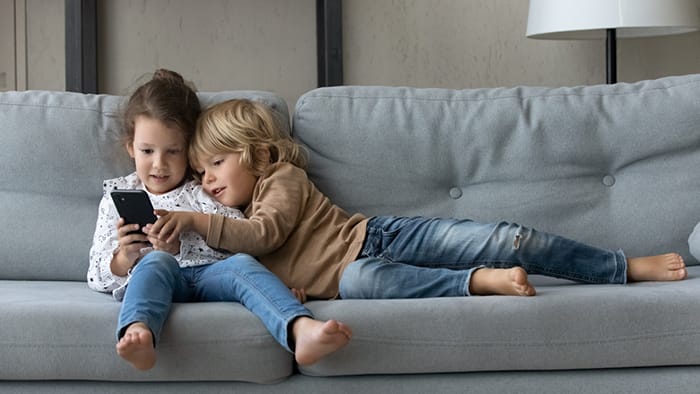Does Screen Time Cause Myopia?

Myopia, or nearsightedness, has become increasingly prevalent among children worldwide. The excessive use of digital screens, such as smartphones, tablets, and computers, has been associated with the development and progression of myopia in children. Understanding the impact of screen time and implementing effective myopia management strategies is crucial for parents. Dr. Rachael Sweeney, Dr. Jonathan Chen, and Dr. Lay Nim from Vision Source Insight Eyecare are happy to outline Myopia Management Strategies and prescribe the best treatment.
Myopia Research – Devices
Research has highlighted the relationship between screen time and myopia in children. A study published in JAMA Ophthalmology in 2015 examined the association between screen time and myopia among 1,916 Chinese children aged 7 to 12. The researchers found that increased screen time, particularly for activities involving near work, such as reading or using handheld devices, was associated with a higher prevalence of myopia.
Another study published in the journal Ophthalmology in 2020 investigated the impact of screen time on myopia progression in children aged 6 to 12. The study followed 1,780 children over a two-year period and found that increased screen time was associated with a higher risk of myopia progression. Children who spent more time on screens had a greater increase in their myopia prescription compared to those with limited screen time.
 Myopia Management and Screen Time – Best Practices
Myopia Management and Screen Time – Best Practices
Based on the research, here are some key recommendations for parents regarding myopia management and screen time:
- Limit screen time: Set clear limits on the amount of time your child spends on screens each day. The American Academy of Pediatrics recommends no more than two hours of recreational screen time per day for children aged 6 and older. Encourage breaks from screens and engage in other activities that involve distance vision.
- Implement the 20-20-20 rule: Encourage your child to follow the 20-20-20 rule, which suggests taking a 20-second break every 20 minutes to look at something 20 feet away. This practice helps reduce eye strain and promotes better visual hygiene.
- Opt for outdoor activities: Encourage your child to engage in outdoor activities that involve looking at distant objects. Spending time outdoors has been associated with a reduced risk of myopia development and progression.
- Maintain proper posture and lighting: Ensure that your child maintains a good posture while using screens, with the screen positioned at eye level. Additionally, provide appropriate lighting conditions to reduce eye strain.
- Regular eye check-ups: Schedule regular eye examinations for your child to detect myopia or any changes in vision. Early detection allows for timely interventions and myopia management strategies.
- Consult with an eye care professional: If you have concerns about your child’s screen time or the risk of myopia, consult with an eye care professional. They can provide personalized advice and recommendations tailored to your child’s needs.
Myopia and Screen Time – Summary
By implementing these strategies, parents can help manage their child’s myopia and reduce the potential negative impact of excessive screen time on their vision. However, it is important to remember that myopia is influenced by various factors, including genetics and environmental factors. Therefore, a comprehensive approach that addresses screen time, outdoor activities, and regular eye care is essential for effective myopia management in children.
Myopia – Atlanta, Atlanta, GA
Vision Source Insight Eyecare has been treating patients using Myopia Control since 2004 and has helped hundreds of patients achieve amazing results. All Myopia Control treatments begin with a Consultation. Please call to schedule an Appointment today at Atlanta/Atlanta 404 250 1680 or send us an Online Consultation Request for Myopia Management.
